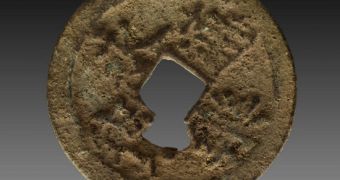A team of scientists exploring Kenya's island of Manda recently came to find a 600-year-old coin made from copper and silver. As the picture next to this article shows, the coin has a square hole in its middle, which researchers believe allowed people to wear it on their belts.
By the looks of it, the coin was issued during the reign of Ming Dynasty Emperor Yongle (1403-1425AD), hence its displaying his name on it.
Thus, the scientists who made this discovery explain that, during that time, both this coin and others of its kind were referred to as Yongle Tongbao.
According to the official website for The Field Museum of Chicago, Emperor Yongle was quite fond of organizing and financing political and trading missions aimed at establishing connections with the people inhabiting the portions of land found around the Indian Ocean.
More precisely, he allowed and encouraged an admiral named Zheng He to explore these parts of the world and later on report back to him.
As Dr. Chapurukha M. Kusimba, currently working as the curator of African Anthropology at The Field Museum puts it, “Zheng He was, in many ways, the Christopher Columbus of China. It’s wonderful to have a coin that may ultimately prove he came to Kenya.”
Despite the fact that Chinese currency is rather difficult to find in East Africa, the researchers who found this coin explain that its being present on Kenya's island of Manda is proof enough that, at one point in the past, China and Africa engaged in trading activities.
Furthermore, such exchanges took place long before European explorers came to visit these regions themselves.
“This finding is significant. We know Africa has always been connected to the rest of the world, but this coin opens a discussion about the relationship between China and Indian Ocean nations,” Dr. Kusimba argued.
“We hope this and future expeditions to Manda will play a crucial role in showing how market-based exchange and urban-centered political economies arise and how they can be studied through biological, linguistic, and historical methodologies,” he later added.

 14 DAY TRIAL //
14 DAY TRIAL //